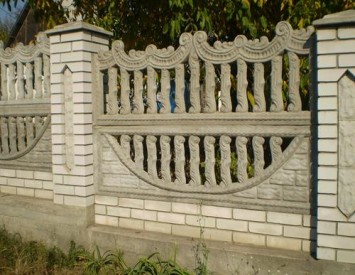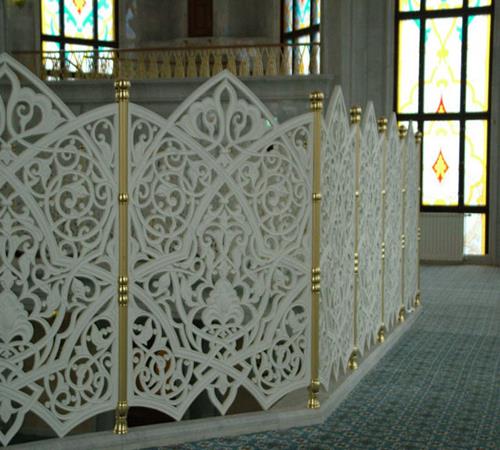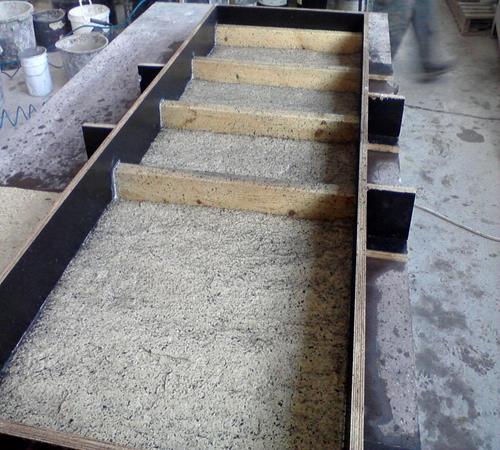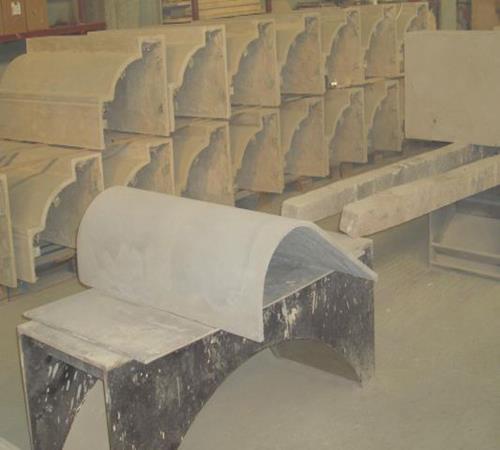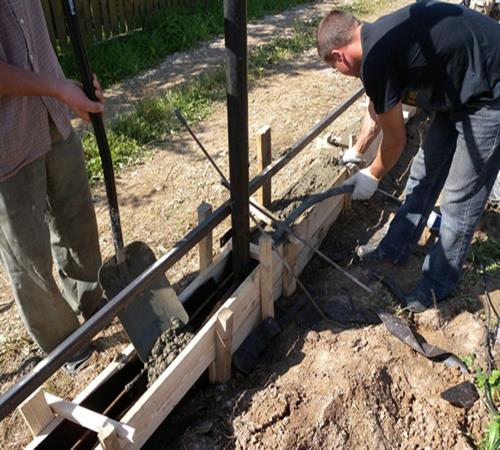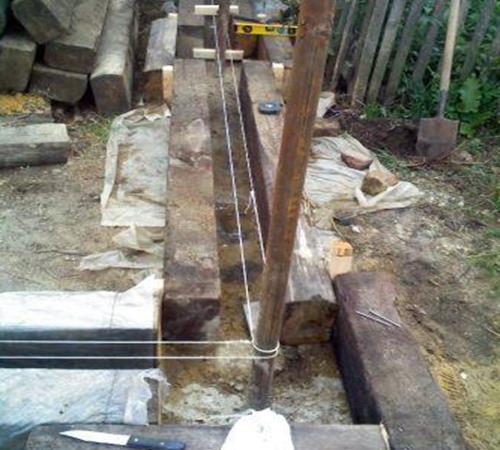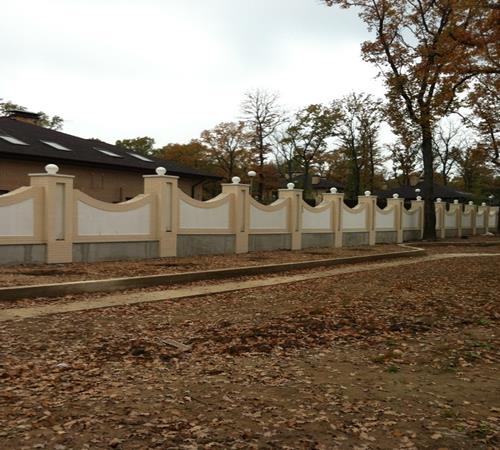It is difficult to imagine something as well suitable for wide application as glass-fiber concrete. This light and durable material allows you to turn into reality any artistic plan of the architect, and not a single weather can destroy such splendor. So what is a good glass -fiber concrete, products from which are so highly appreciated by most professional builders.
Content
What is glass -fiber concrete and its properties
Glass -filmed concrete (SPB) is an absolutely environmentally friendly and harmless building material for humans. In fact, this is a multicomponent compositional substance based on simple concrete, with the addition of reinforcing materials in it, primarily a polymeric alkaline fiber and additional components: sand, water and port -cement (synthetic matter based on calcium silicates, which has excellent astringent properties).
The technological process of manufacturing glass -fiber concrete cannot be called unnecessarily complex. In fact, the action is a connection of all components in the necessary ratio and further kneading in a concrete mixer. The manufacturing process consists of several stages:
- a mixture of cement-sand mortar in the following proportions is prepared: 48 kg of cement (pcs 500 brands) and 6 kg of chemical additives consisting of a percentage of 88% silicon oxide (SIO2), 10% of the C-3 plasticizer and 2% water ) 22 kg of peeled sand is poured,
- then, water is added to the mixture, at the rate of 17 cubic meters for the finished mixture (such a large amount of water is required so that the solution has the necessary degree of liquid medium to carry out the process of applying the form through the pneumatic pistol),
- further, the resulting material is subjected to cyclic mixing for five minutes in a concrete mixer (or in a special mixer with a frequency of 500 rpm),
- after the indicated actions, the reinforcing fibers of the polymer material is added to the finished mixture and subsequent kneading is carried out for the uniform distribution of fibers along the entire mixture. It should be noted that mixing is carried out at low speeds, not more than 70 rpm,
- then, already at the bottom of the form, using an air pistol, the finished solution is applied in layers, at first preliminary, with a thickness of 2 mm, after it the main 6 mm is applied, and then using a simple roller, a seal is carried out.
As can be seen from the above methodology, it is quite possible to prepare such a mixture yourself, in the presence of the necessary components and tools for work. Despite the fact that the preparation of fiberglass concrete does not require special conditions and quite low -cost, this universal material in addition has a number of characteristics that provide it with leading positions among competitors:
- dry density on average is two tons per meter cubic,
- the shock viscosity of the resulting material is from 1 to 2.5 kilograms per millimeter square,
- the fire resistance of the SFB is higher than that of concrete,
- thermal conductivity is only 0.6 watts per square centimeter,
- the strength of the strength at the time of stretching on the bend on average is on an indicator of 260 kg per square meter. cm.
If you say it is easier, then the glass -filmed concrete exceeds the usual concrete in shock strength by 10 times, the corrosion resistance is twice higher. On average, the strength of the strength, stretching and compression is superior to the concrete in the concrete, viscosity when reaching strength is higher up to 30 times. Frost resistance of SFB compared to reinforced concrete is 7 times higher. In fact, all this is achieved by introducing reinforcing fibers from fiber with a length of fibers from 20 to 40 millimeters by introducing into the material. The rest of the technological process of manufacturing the mixture does not have significant differences in comparison with the preparation of ordinary concrete.
The advantages of glass -fiber concrete
Glassry -concrete concrete has a number of advantages that make its use economically appropriate:
- The PSBB is easily taken by any architectural form, it is possible to create from the simplest to multi -level compositional design elements. To recreate a really beautiful decor element will turn out using the desired shape,
- the ratio of weight and strength of the material is quite confidently called optimal, which positively affects the transportation and storage of the material,
- technologically, the SPB is a perfect building material: with a simple addition of fiberglass to the structure of the mixture, its quality in terms of strength, resistance to external sources and reducing the number of shrinkage microcracks allowed glass -fiber concrete to gain popularity in the construction sphere,
- the material is characterized by chemical resistance to acids and alkalis,
- good indicators for ensuring the heat and sound insulation properties compared to ordinary concrete,
- an important advantage when used in architectural decoration: aesthetic attractiveness.
SPB allows you to recreate almost any surface, so this property will be another plus towards its aesthetic species. The decision to use the specified material for cladding of various structures will be correct. For example, fences made of glass -fiber concrete are distinguished not only by their strength, but also by ease of construction. But what is required primarily for the installation of such a fence?
Necessary inventory for the installation of fence made of glass -fiber concrete
Of course, you can’t build any fence on enthusiasm alone. The following components must be available:
- metal reinforcement with a diameter of 10 mm, which will be introduced into the foundation and will serve as a shrinkage base for blocks from SFB,
- cement solution (the ratio of two parts of cement to six sand is quite suitable when mixing the mixture),
- the construction level (two is better, one small length of 50 cm, the second building, 2 meters long),
- punch for making holes for reinforcement in concrete blocks,
- a punch nozzle for kneading the solution,
- rope for setting a horizontal level when laying blocks,
- paint for finish decorating mounted panels.
The final type of fence will differ in monumentality and aesthetic attractiveness. In fact, it will be quite simple to achieve even screaming high cost and pomp, which lovers of this style will have to taste. Nevertheless, it is important to remember that finished products made of glass -fiber concrete are characterized by a high final cost, which is a significant drawback. The main complexity is the acquisition of fiberglass. To prepare the solution, the bulk material with separated fibers with dimensions is from 20 to 40 mm should be used.
Foundation for fence made of glass -fiber concrete
Before considering the question of how to make a fence from the SPB, you should prepare a quality foundation. Despite the fact that ready -made blocks have a relatively small weight in relation to concrete, the technology for creating the foundation as the basis of the fence does not have significant differences. This is primarily due to the fact that the foundation should hold the fence in an even position for a long period, despite the effects of the climate and the quality of the soil.
When creating a foundation that will stand for decades, you should take into account the following points:
- all components for work should be prepared in advance: the tool and the components for the preparation of the mixture,
- it is necessary to observe the proportions when mixing the components of the solution,
- it should be moistened by the Earth in a trench with water, since the soil has the ability to pull moisture, a similar action is necessary in order to maintain the ratio of water in the solution under the foundation.
The first stage is the markup:
- First, you should carefully mark the boundaries of the future fence. In the corners (if the fence has a rectangular shape), it is necessary to drive the stakes on which the rope is attached to the visual designation and alignment of the boundaries.
- After that, calculations must be made according to the project on how many fencing pillars will be dug between the spans of the wall blocks.
- Next, a trench is dug along the lines of the fence that corresponds to the soil type in which work is carried out:
- turniped soils are best suited under the foundation, since they consist of breeds of gravel or sand with a coarse -grained structure. For such soil, the depth of digging at 40 cm is quite suitable;
- sedimentary soils in those places where water arrays (rivers, lakes) were previously poorly suitable for laying the foundation. In the event that weil or clay masses prevail in the ground, it is inappropriate to build the foundation, since the silt is eroded, and the clay absorbs moisture and swells, as a result of which the foundation will inevitably be destroyed,
- a completely sandy base is also a problem. In this case, it is often necessary to deepen the foundation per meter into the ground, and the very bottom of the trench is strengthened with pillows from gravel of large fractions (from 20 mm),
- east soils are quite convenient for the construction of the foundation on them, since they do not require preliminary preparation.
In this case, it is enough to dig a trench with a depth of 40-50 centimeters and strengthen it with the formwork.
For the construction of a fence made of glass -fiber concrete, the most preferred options will be the construction of a strip foundation with a depth of 50 cm and a width more than that of the fence. Such a foundation is built using gravel, when the bottom of the dug trench is covered with a gravel pillow, and a formwork of boards is installed along the edges of the trench. Following this, with the help of a reinforcement with a diameter of 10 mm, the base is laid, which is poured with concrete solution. When the foundation is ready, it is worth starting the direct construction of the fence on the site.
TECHNOLODICTION TECHNOLOGIC TEARCH
It is not so difficult to make a fence with your own hands from hollow blocks of glass -fiber concrete if you observe all aspects of the work and carefully install the blocks.
- the first stage is the installation of hollow plates (cabinets) of the base, on which the solution will be filled later,
- in the base blocks, the input holes for reinforcement should be drilled in advance using a perforator or powerful drill,
- following the assembly of the remaining elements: first of the vertical pillars of the base, then horizontal elements of the fence (each of which is filled with cement mortar of any brand and reinforced).
It is important to constant control of all mounted elements of glass -fiber concrete blocks at the same level, without tolerances in deviations. After the design is completed, the work ends with the stage of finishing. Mounted blocks are painted under the required color with paint for concrete surfaces, and the fence is ready.
As already mentioned earlier, due to the excellent ability to simulate other natural materials, from blocks of the same composition, it is possible to create whole compositions that will be bizarre relief surfaces with the type of wood or marble. With the help of fiberglass concrete, the question will not arise about how to make the fence aesthetically attractive. Creating a finished mixture is quite simple, and if you have an artistic taste and skills of creating casting forms for exterior panels, then in a short time a fence will be erected, which is a real top of architectural design.
